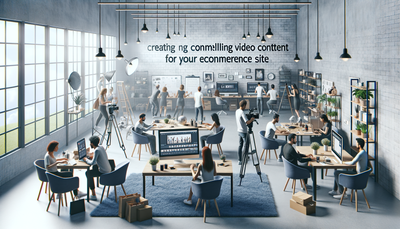Creating Compelling Sales Copy That Converts: A Guide for Website Owners
In the digital age, compelling sales copy is essential for website owners looking to convert visitors into customers. This comprehensive guide delves into the art of crafting persuasive content that resonates with your target audience and drives conversions. We'll explore key copywriting techniques, including benefits-focused writing and emotional triggers, to help you create powerful sales copy that engages readers and motivates them to take action. Whether you're a seasoned marketer or new to copywriting, this article will provide valuable insights and practical tips to elevate your website's sales copy and boost your conversion rates.Table of Contents:

Understanding Your Target Audience
Before diving into copywriting techniques, it's crucial to understand your target audience. Conduct thorough market research to identify your ideal customers' demographics, pain points, and desires. This knowledge will help you tailor your sales copy to address their specific needs and preferences.Create detailed buyer personas to guide your writing process. These fictional representations of your ideal customers will help you craft messages that resonate with their values, aspirations, and challenges. By speaking directly to your audience's concerns and desires, you'll be better equipped to create compelling copy that converts.
Do you need a website? Want to build a website but don't know where to start? Our website builder is the perfect solution. Easy to use, and with the ability to customize to fit your business needs, you can have a professional website in no time.
Emphasizing Benefits Over Features
One of the most effective copywriting techniques is focusing on benefits rather than features. While features describe what your product or service does, benefits explain how it improves your customers' lives. Highlight the positive outcomes and advantages that your offering provides.For example, instead of saying 'Our website builder has a drag-and-drop interface,' you could write 'Create stunning websites in minutes, even with no coding experience.' This approach helps potential customers envision the value they'll receive and makes your offer more appealing. Remember to address your audience's pain points and show how your product or service solves their problems.
Crafting Attention-Grabbing Headlines
Your headline is the first thing visitors see, making it crucial for capturing their attention and encouraging them to read further. Create headlines that are clear, concise, and compelling. Use power words, numbers, and emotional triggers to pique curiosity and generate interest.Consider using formulas like 'How to [Achieve Desired Outcome] in [Timeframe]' or '[Number] Ways to [Solve a Problem].' Test different headline variations to find what resonates best with your audience. Remember that your headline should accurately reflect the content that follows to maintain trust and credibility with your readers.
Building a website with SITE123 is easy
Leveraging Emotional Triggers
Emotions play a significant role in decision-making, making emotional triggers a powerful tool in sales copy. Identify the emotional drivers that motivate your target audience and incorporate them into your writing. Common emotional triggers include fear of missing out (FOMO), desire for belonging, and aspiration for success.Use storytelling techniques to create an emotional connection with your readers. Share customer success stories or paint a vivid picture of how your product or service can transform their lives. By tapping into your audience's emotions, you can create a stronger desire for your offering and increase the likelihood of conversion.
Creating a Sense of Urgency
Incorporate elements of urgency and scarcity into your sales copy to motivate readers to take immediate action. Highlight limited-time offers, exclusive deals, or limited stock availability to create a fear of missing out. Use phrases like 'Act now,' 'Limited spots available,' or 'Offer ends soon' to encourage quick decision-making.However, be cautious not to overuse urgency tactics, as this can come across as insincere or pushy. Strike a balance between creating a sense of urgency and maintaining your brand's credibility and trustworthiness.
Using Social Proof
Incorporate social proof elements into your sales copy to build trust and credibility with potential customers. Include testimonials, customer reviews, case studies, and success stories that showcase the positive experiences of others who have used your product or service.Highlight any relevant statistics, awards, or media mentions that demonstrate your expertise and reliability. For example, you could mention the number of satisfied customers or the percentage of users who achieved specific results. Social proof helps alleviate doubts and reassures potential customers that they're making the right choice by choosing your offering.
Optimizing for Readability
Make your sales copy easy to read and scan by using short paragraphs, bullet points, and subheadings. Break up large blocks of text to improve readability and keep readers engaged. Use bold or italicized text to emphasize key points and make important information stand out.Incorporate white space to give your content room to breathe and make it less overwhelming for readers. Choose a clear, legible font and ensure proper contrast between the text and background. By optimizing for readability, you'll increase the chances of visitors consuming your content and taking the desired action.
Crafting Compelling Calls-to-Action (CTAs)
Your call-to-action (CTA) is a critical element of your sales copy, guiding readers towards the next step in the conversion process. Create clear, action-oriented CTAs that stand out visually and communicate the value of taking action. Use strong verbs and specific language to encourage clicks.Experiment with different CTA placements throughout your copy, such as within the content, at the end of sections, or in a prominent sidebar. Test various CTA designs, colors, and copy to find the most effective combinations for your audience. Remember to align your CTAs with the user's stage in the buyer's journey and provide appropriate next steps.





